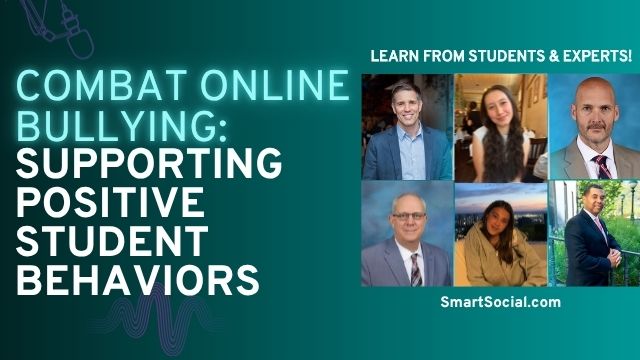How to Improve Your Digital Footprint for College
Green Zone App
(Click here to learn more)
Dangerous Social media challenge
(Click here to learn more)
Red Zone App
(Click here to learn more)
Gray Zone App
(Click here to learn more)

We reached out to 5 experts and asked them how college-bound teens can be proactive with their digital footprint[/caption]If you’re a parent or educator of a college-bound teen then, chances are, you understand how important their digital footprint is to the college admissions process. The first step is to ensure that your teen’s digital footprint is a positive representation of themselves and their goals. But with so many social media platforms, conflicting advice, and online opportunities, what’s the next step?
We reached out to 5 college admissions and online reputation experts and asked them how college-bound teens can be proactive with their online presence. Here are their best tips for improving a teen’s digital footprint for the college admissions process.
1. Take initiative and be active on LinkedIn
Kristen Moon, Founder of Moon Prep

One of the best-kept secrets in the college admissions game is LinkedIn. It's not just for job seekers anymore. Many high school students do not utilize LinkedIn, so by having a profile and being active it will give you an advantage. Think of LinkedIn as a tool that makes your one-page resume come to life. Soccer player? How about posting a video for admission officers to see. Artist? Upload some of your artwork. Tech savvy? Link to your website or graphic design work. Students can connect with admission officers through University Pages, where they can find a wealth of information about each college. Students can also connect with alumni on LinkedIn, through Alumni Groups. In the college admissions world, this is what we call demonstrated interest. This shows the admissions staff you took initiative, are eager to learn more about the university, and are a serious candidate.
2. Practice reputation management
Ed Brancheau, SEO Consultant at Goozleology

Students can improve their digital footprint using the same methods we use for business reputation management. First, you need to find out what is out there online about you or someone else with the same name. Then it becomes a process of removing the negative stuff and actively promoting the positive things about yourself online.
Finally, use social media to your advantage. If you participate in a lot of extracurricular activities, post photos of them all, and be sure to delete anything that could be embarrassing. Sure, things never get deleted off the Internet but you don't have to make it easy for college admissions to find.
3. Tailor social media accounts to express passions
David Kim, Founder of C2 Education

Social media profiles are double-edged swords in the college admissions process. On one hand, a student who has a passionate interest in photography can express said interest online such as maintaining a unique Instagram account just for photography–an organic, online portfolio. On the other hand, the same student could post only memes as an expression of humor, thereby leaving viewers with the impression that the student has a different passion or lack of one. Any online component of a student's life can be positive or negative; unfortunately, an online post or profile cannot exhibit the intention of the poster and can only take on the qualities that viewers must assume about the poster based on their own impressions. Students should conduct detailed research into a school's policies concerning social media profiles, create separate accounts for personal and extracurricular posts, and tailor specific accounts to express passions, hobbies, and activities.
4. Create “brand building” social media accounts
Justin Lavelle, Communications Director for BeenVerified

Google your name and verify that there aren’t embarrassing or negative stories or photos floating around that would tarnish your image. Consider setting up “brand building” social media pages that focus on your volunteering efforts, community involvement and business development initiatives to share with colleges. Set up a personal website that highlights your accomplishments and post a few well written blog posts there sharing some of your volunteer or other experiences. The link to your personal website will be easy to include in correspondence with colleges.
5. Think about the content before publishing
Jonathan Perkins, Admissions Consultant at Essaywise

For the high school seniors I work with, I have instituted the grandma rule. If you have posted something on social media you would be embarrassed to show your grandma, chances are you don't want colleges to see it, either. Consider the grandma rule before publishing anything to social media.
Protect your family and enter for a chance to win cool prizes
Become a member or log in to learn more on this topic
Protect your family and enter for a chance to win cool prizes

., start learning from this page to earn points!*
Hello, I'm Josh, the founder of SmartSocial.com.
Don't leave this page until you fill out our feedback form that will appear after you learn from the resources...
Become a Very Informed Parent (VIP) to get our social media suggestions in your email every Tuesday & Thursday.



Hello, I'm Josh, the founder of SmartSocial.com. Protect your family by taking my 1 minute quiz
This quiz will help you understand how safe your family is


Schools & Districts: Partner with us to protect your community online
Our remote presentations (and website) teach over a million parents and students each year how to be safe so they can shine online. We teach students how their accounts can be used to create a portfolio of positive accomplishments that impress colleges and employers.


Join Our Smart Social Podcast
each week on iTunes
With over 500 episodes, Josh Ochs interviews psychologists, therapists, counselors, teachers, and parents while showing you how to navigate social media to someday shine online.
Listen on:



.jpg)
.jpg)
.jpg)


